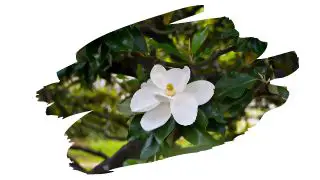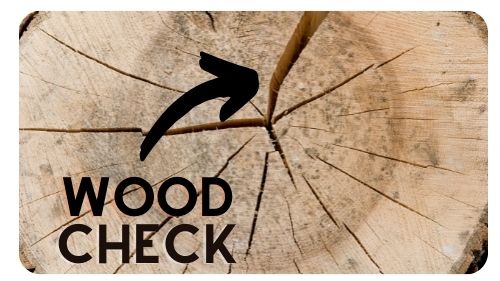Selecting the right type of wood for carving can feel a little complicated at times.
And this is in no small part due to the variety of different carving styles. That’s because different wood carving styles require different types of wood.
So, what kind of woodcarving style is Magnolia wood good for?
Well, in this post you will discover why it is the toughness of wood that largely dictates it’s suitability for carving. You’ll also learn how hard Magnolia wood is — and what kind of woodcarving styles it’s right for.

This post may contain affiliate links to products that we receive a commission for (at no additional cost to you). Learn more here.
What Is The Best Wood For Woodcarving?
The answer to this largely depends on your wood carving style.
Some carving styles use hand tools and require a light touch. So, these carving techniques require quite low density soft pliable woods.
On the other hand, there are some carving styles that need a heavier hand — and in some cases even require power tools. So, tougher wood types are more suited for these styles.
Related Post: 9 Easy Whittling Projects For Beginners (That You Can Make This Weekend)
OK…So What Types Of Wood Are Best For Different Carving Techniques?
Well, when it comes to light touch carving that uses hand tools, you should use pliable woods.
So for whittling, Basswood and White Pine are good choices, because they don’t require a lot of force to cut. And, these timber types also hold designs rather well too.
For styles that require a bit more force, (such as Chip Carving), lumber such as Black Walnut and Cherry, are ideal.
But, when it comes to intense carving styles — of the kind that require power tools — you need very tough timber. So, for styles like Chainsaw Carving, you need to use a tough timber like European Oak (a.k.a White Oak).
Related Post: 11 Surprisingly Simple Wood Carving Projects for Absolute Beginners
And What Type Of Carving Style Is Magnolia Wood Suited For?
One of the first things you need to know about a woods suitability for a carving style, is its toughness.
Very soft woods are great for delicate precise cut carving. While heavy hard timbers are not.
And, one of the ways that we measure the hardness of a particular wood, is by checking its Janka rating.
That Janka rating measures how much force it takes to make a dent in a piece of wood. The higher the Janka rating, the more force it takes. And the more force it takes, then the harder the timber.
When it comes to woodcarving techniques such as Chip Carving, Black Walnut is a great choice wood for this particular style.
Now, Black Walnut has a Janka rating of 1010 lbf. And this means that it will take some 1010 pounds of force to dent this tough hardwood timber.
However, when we look at the Janka rating for Magnolia wood, it is a mere touch above Black Walnut, at 1020 lbf.
So, Magnolia wood is a solid choice wood for carving styles like Chip Carving. Although, it is too hard for whittling with basic hand tools.
Related Post: 5 Clever Wood Turning Projects (For Lathe Beginners)
But Is It Generally Easy To Carve Magnolia Wood?
Well, green Magnolia wood is surprisingly easy to cut into. Green wood is any wood that’s been freshly cut from a tree. And at this stage, Magnolia is fairly pliable — although it’s texture can be a little bit stringy.
Still, as long as you carve with the grain, not against it, that stringiness won’t result in this wood splintering apart.
However, the big plus of this particular timber is it’s ability to hold designs — and that’s thanks to it’s stability.
You see, Magnolia wood doesn’t shift around much — after it has finished seasoning. And that minimizes the chance of wood checks appearing in this timber.

What Is Seasoning? When wood is freshly cut from a tree, it has a lot of moisture in it. However, before we can use that timber for woodworking, it needs to dry out. This drying out process is called ‘seasoning’, and it can take anywhere from 6 months to 18 months to complete (depending on the tree species).
What Do You Mean By Magnolia Being A Stable Wood?
Well, beyond woods toughness, another thing we need to check for is a wood types stability. You see, the more stable a wood is, then the less likely it is to warp or form wood checks.
When wood warps it is a result of moisture and heat. As wood absorbs moisture, wood expands. And as it dries out, wood shrinks back down.
This shifting movement is the cause of warping, twisting, cracking and splitting.
Now, there are some types of wood that are stable enough to not shift around like this. And these stable ‘warp-resistant’ wood types are unaffected by changes in humidity or a splash of water.
So, Is Magnolia Wood Good For Carving?
When it comes to practicing whittling cuts, green Magnolia wood is as good as any wood to use. However, you may find it tricky working around the stringy texture of this lumber.
Nevertheless, while it is no Basswood, green Magnolia wood is still good for whittling crafts such as spoons.
To Wrap Up, Here Are The 3 Key Takeaways From This Post…
- 1). Magnolia wood is a tough timber, and it is a touch harder than Black Walnut.
- 2). Freshly cut green Magnolia wood is pliable enough to be cut with whittling tools.
- 3). Green Magnolia wood has a stringy texture to it that can lend itself to splintering.



